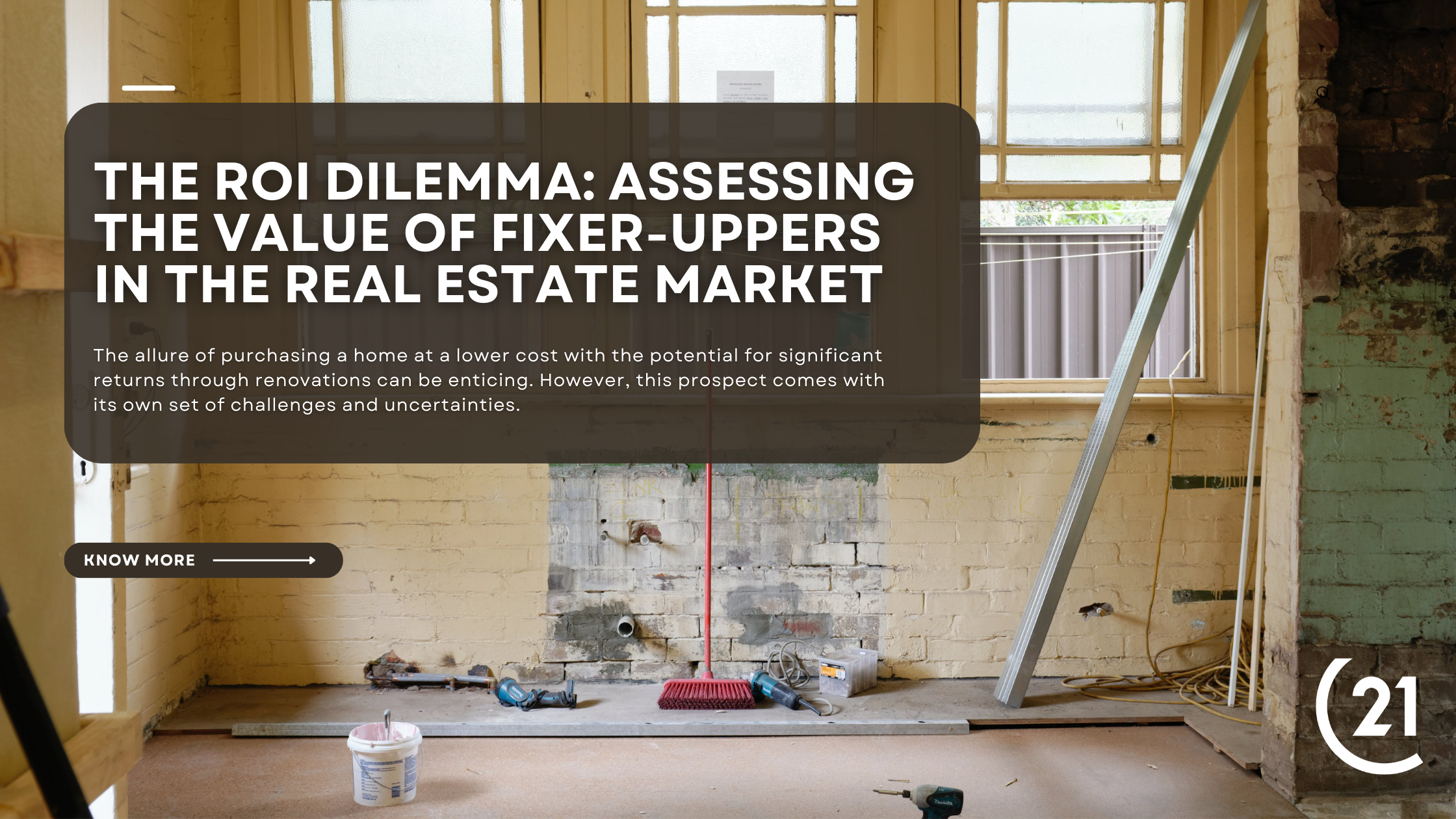In the ever-evolving landscape of real estate, investors often find themselves faced with a dilemma when considering fixer-upper properties. The allure of purchasing a home at a lower cost with the potential for significant returns through renovations can be enticing. However, this prospect comes with its own set of challenges and uncertainties. Let’s delve into the pros and cons of investing in fixer-upper properties, addressing common concerns and offering insights into the renovation’s worth.
Pros of Investing in Fixer-Uppers:
Cost Savings: One of the primary attractions of fixer-uppers is the initial cost. These properties are typically priced lower than move-in-ready homes, allowing investors to acquire real estate at a more affordable entry point.
Potential for High Returns: Renovating a property presents a valuable chance to substantially boost its worth. Skillfully carried out renovations have the potential to elevate the property’s resale value, providing investors with the opportunity for substantial returns on their initial investment. If approached strategically, the return on investment for a property in need of repairs can be considerable. The combination of the initial investment and well-thought-out renovations can yield a standout property in the market, attracting a premium price.
Customization and Personalization: Investors find fixer-uppers enticing as they offer the flexibility to personalize the property according to their preferences. This customization holds special appeal for individuals aiming to craft a distinctive living space or cater to a specific target market. Engaging in the renovation of a fixer-upper not only facilitates creative expression but also allows investors to align the property with current market trends, thereby augmenting its attractiveness and potentially securing a higher resale value.
Market Appreciation: An adeptly renovated fixer-upper has the ability to captivate buyers in search of a one-of-a-kind property. The narrative of its transformation forms a compelling story that sets the property apart from others in the market. Moreover, investing in a property situated in an up-and-coming neighborhood has the potential to contribute to its increased market value over time. The initial investment in a fixer-upper stands to gain from the overall growth and development of the surrounding area.
Cons of Investing in Fixer-Uppers:
Unforeseen Costs: Embarking on renovation projects frequently entails unforeseen expenses, as hidden structural issues, compliance with building codes, or unexpected challenges can swiftly escalate costs beyond the initial budget. Renovation endeavors are often marked by these unanticipated financial burdens, with unforeseen structural concerns, concealed damages, or complications with permits swiftly increasing the overall investment and diminishing the expected return on investment.
Time-Consuming Renovations: Renovations demand a significant amount of time, and in the dynamic real estate market, time equates to money. Factors such as construction delays, the process of acquiring permits, or unexpected complications can extend the duration between the property’s purchase and resale, thereby influencing the investor’s cash flow. Investors must carefully factor in the potential delays in selling or renting the property, recognizing that these delays can have a direct impact on the overall return on investment (ROI).
Market Volatility: The real estate market is inherently unpredictable. Economic downturns or shifts in market trends can affect the resale value of a property, potentially impacting the expected returns.
Financing Challenges: Securing financing for a fixer-upper can be more challenging than for move-in-ready homes. Lenders may be hesitant to provide loans for properties that require extensive renovations, making it essential for investors to explore alternative financing options.
Emotional Toll: The process of transforming a fixer-upper can be emotionally taxing. Dealing with unexpected challenges and the pressure to meet deadlines can take a toll on investors, requiring resilience and adaptability.
Assessing the Worth of Renovations:
Thorough Property Inspection: Conduct a comprehensive property inspection before purchasing to identify potential issues. Knowing the condition of the property will help in estimating renovation costs more accurately.
Market Analysis: Analyze the local real estate market to understand the demand for renovated properties. Identifying the preferences of potential buyers or renters can guide renovation decisions to maximize appeal.
Strategic Renovations: Prioritize renovations that add significant value to the property. Focus on high-impact areas such as kitchens, bathrooms, and curb appeal to maximize buyer interest.
Budgeting and Contingency Planning: Formulate an elaborate renovation budget that encompasses a contingency fund to accommodate unforeseen expenses, enhancing financial readiness to counter unexpected challenges throughout the renovation process. Construct a comprehensive financial model that takes into account acquisition costs, renovation expenses, carrying costs, and potential resale value. This approach facilitates realistic projections and enables a thorough assessment of the investment’s viability. It is advisable to incorporate a contingency fund within the financial model to ensure robust financial preparedness, effectively offsetting any unanticipated expenses that may emerge during the renovation process.
Professional Guidance: Seek advice from real estate professionals, contractors, and architects. Their expertise can provide valuable insights into the potential challenges and benefits of renovating a specific property.
Investing in fixer-upper properties can be a rewarding venture for those willing to navigate the challenges and uncertainties associated with renovations. While the potential for high returns exists, careful consideration, thorough research, and strategic planning are essential to ensure that the investment aligns with both short-term goals and long-term market dynamics. By weighing the pros and cons and making informed decisions, investors can turn fixer-uppers into lucrative opportunities in the dynamic world of real estate.


 Facebook
Facebook
 X
X
 Pinterest
Pinterest
 Copy Link
Copy Link


